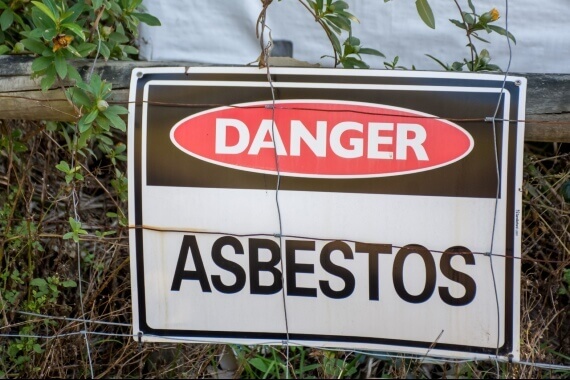Move Toward the End of Asbestos Disease with a Ban
Awareness & ResearchWritten by Dr. Raja Michael Flores | Edited By Walter Pacheco

If we eradicate asbestos, we eradicate asbestos disease. That’s the bottom line.
What would that mean?
Most notably, it would mean no more cases of malignant mesothelioma, a completely preventable cancer that we have failed to prevent.
Realistically, though, I don’t think we can eradicate it in our lifetime – it will take longer than that – but let’s at least start moving in that direction again.
April 1-7 is National Asbestos Awareness Week. Now is the time to bring more attention to this important health issue.
First, we need a ban of asbestos, a complete ban. We stopped mining it in our country almost 20 years ago. Now we need to prevent all asbestos from coming in.
In 2020, an estimated 300 metric tons of raw asbestos was imported into the U.S. And that doesn’t include the various manufactured products that still contain asbestos. That number isn’t even measured.
Need for Asbestos Legislation
We just can’t keep bringing in new asbestos from outside the country and think we can eliminate asbestos diseases. A complete ban is needed to start moving toward that goal.
This is where we need federal legislation. The politicians have the potential to save more lives than the doctors do, if they can deliver a law to ban asbestos.
I’ve said this many times, but I’ll say it again: The pen can be more powerful than the knife.
It’s in the hands of the politicians, 100%. Laws are supposed to help the people who can’t protect themselves, and that’s where we need new legislation.
Unfortunately, I’ve been hoping for ban, talking about a ban, for the last 10 years, so I’m not holding my breath on this one. There are just so many other interests involved, and that’s a shame.
Understanding the Terror of Asbestos Disease
One of the reasons we’ve been unable to legislate a ban is that, unless you’ve been directly affected by asbestos, you don’t really understand the horrors of it and how innocent people are impacted so painfully.
The pain involved with getting mesothelioma – the suffocation, prolonged agony, the feeling that you can’t breathe – it’s overwhelming.
Once you’ve seen that and realize what it can do to somebody, you won’t turn your back on it like so many people do. It’s a relatively rare cancer, so very few people are exposed to the true horrors of it.
Then there’s the issue of legacy asbestos, which has been lingering since the days when asbestos and asbestos products were used everywhere in construction.
In many places today, it’s hidden and we don’t even know it’s there. Or, it’s not divulged to the public. I believe everyone needs to know exactly where it is so we can prevent people from getting hurt through asbestos exposure.
That’s what the “need to know” legislation being pushed by some in Congress is about. It’s too easy now for owners to just sweep the issue under the rug and not tell anyone where the asbestos is.
They don’t want to pay for asbestos abatement, which is expensive. Instead, they’ll just let people go into harm’s way. And that’s the problem. You can’t always count on people doing the right thing.
I think we should get rid of legacy asbestos where we reasonably can, doing it easily without totally disrupting everything. But in the areas where it just needs to stay – where it is not harming anyone – people still need to know it lives there. It’s everyone’s right to know about legacy asbestos.
I’m actually surprised we have allowed it to persist like this, to let people benefit financially by turning their heads the other way and pretending it’s not there. That’s really disappointing to me.
Putting People’s Health First
If you call attention to the asbestos it’s going to bring down the property value. But if you ignore it, you’re better off financially. And allowing that to continue is just not right. Money, unfortunately, is taking precedence over the well-being of people.
Firefighters, for example, really need to know where the asbestos is in a building. The obvious fire may be out, but if those firefighters go into an area where behind the wall needs to be checked, they need to know what’s back there. If they know asbestos lives there, you are protecting their lives.
What really hurts is when I hear those stories about finding asbestos where you really never expect it – in children’s toys, in crayons, in the talc, the makeup. That just burns me up.
And this isn’t all about mesothelioma, either. Asbestos exposure causes many more cases of lung cancer, many more, than it does mesothelioma cancer.
It’s just with the lung cancer cases, they usually say there were other reasons behind it, so you don’t hear it so much. But with the 3,000 cases of mesothelioma annually, you can clearly point to the asbestos.
It’s the reason mesothelioma is so easily litigated, because you can’t blame it on anything else.
There also are people dying from the progression of asbestosis. These are all horrible diseases.
As a thoracic surgeon, I can help these patients, but what I can do for them is usually just temporary. We need to do something better than that.
Just remember, eradicating asbestos will eradicate asbestos disease.




